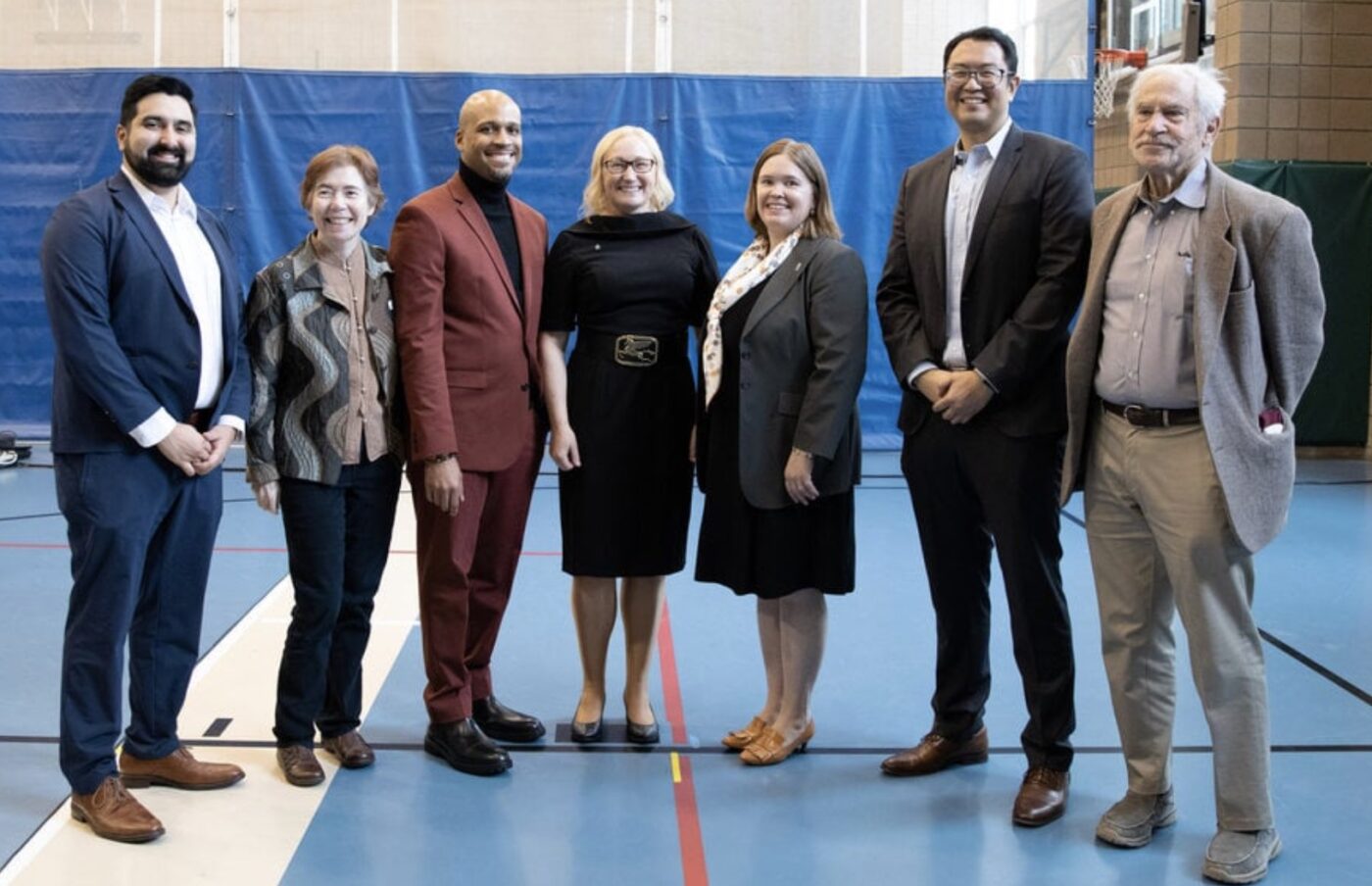Metro Council simply voted to present the Oregon Division of Transportation $250 million for the I-5 Rose Quarter venture. The vote was a major step that makes key funds accessible to ODOT to allow them to transfer ahead with preliminary development work this summer season.
The vote comes simply days after Metro Council members heard sturdy assist for the venture from leaders of Albina Imaginative and prescient Belief, a nonprofit working to re-establish the Black group displaced by development of the freeway within the Sixties, and the proprietor of Raimore Building, a minority owned and operated firm that can obtain contracts to construct the venture.
Along with including lanes to I-5 in a bid to scale back crashes and congestion, the venture features a cowl over the freeway that can include important adjustments to the floor streets with a aim to enhance bicycling and re-stitch neighborhoods collectively. The venture has been almost 15 years within the making and has modified significantly since ODOT first shared design proposals. Even with the addition of buildable freeway covers (which occurred solely by way of sturdy advocacy by Albina Imaginative and prescient Belief), people who oppose the venture don’t belief ODOT. They are saying it’s a wolf in sheep’s clothes and that ODOT is hiding a bigger, 10-lane freeway plan. Many opponents need congestion pricing in place previous to any work to widening the freeway, a coverage that Metro’s Regional Transportation Plan already endorses.
“Any regular DOT engineer would have proposed 9 lanes in every course at this spot to stability out lanes… It is a tweak”
– Lynn Peterson, Metro Council president
Past these considerations, the overall unraveling of ODOT’s price range for the venture has grow to be a good larger concern of many venture skeptics. If the Trump administration continues to freeze round $400 million of an already-promised grant, the price range deficit might balloon to $1.4 billion. Critics say by permitting ODOT to maneuver ahead, the state might be on the hook to totally fund the venture — siphoning funds from different wants within the course of.
At their assembly this morning, Metro council handed the $250 million funding decision 5-1 with one abstention. ODOT says they now have $863 million lined up for the venture, sufficient to construct main parts of the brand new freeway lanes and about 30% of the freeway cowl.

“This isn’t nearly shifting vehicles, it’s about rebuilding the group that was torn down,” mentioned Metro Councilor Ashton Simpson when he launched the decision. “This venture represents a major financial alternative. It is going to create hundreds of fine paying jobs” and “present contracting alternatives for Black-owned companies and Black contractors.” The venture, Simpson mentioned, will, “Restore the financial vitality that was stolen a long time in the past.”
“If we’re critical about racial and financial fairness,” Simpson, who’s Black, continued: “Then we should maintain ourselves accountable to the voices of impacted communities, they usually have spoken clearly in assist of this venture.”
Councilor Christine Lewis mentioned her “sure” vote must be seen as an indication that Metro can seen as a associate in progress with ODOT. “If we’re going to transfer ahead as a associate, engaged on huge issues for the state, that is the precise second when we have now to maneuver ahead.”
The concept that the time had merely come to do one thing, something, to indicate progress on this venture, additionally rang true for Councilor Gerritt Rosenthal. He expressed misgivings with the venture, saying he doesn’t suppose it’ll scale back congestion, however that, “It’s mandatory to maneuver ahead.”
Councilor Juan Gonzalez, who has taken principled stands in opposition to freeway expansions up to now, additionally voted sure this morning. “The motion earlier than us is to assist program the biggest restorative justice venture in America. That’s a giant deal proper now,” he mentioned. Gonzalez sounded pleased with how Metro helped “mould” the venture from simply one other freeway enlargement into one thing he thinks, “will obtain so a lot of our targets throughout the board.” And just like councilors Lewis and Rosenthal, Gonzalez mentioned his assist can be primarily based on the assumption that, “It’s essential to ship a message to Salem and D.C. that this area can and can construct huge, lovely issues.”
Councilor Duncan Hwang couldn’t get himself to vote “sure” or “no,” so he abstained. He mentioned he’s “deeply supportive” of all the roles for Black enterprise house owners and the reconnection of this historic Albina group; however he additionally has critical reservations about ODOT’s fiscal irresponsibility. Hwang mentioned he couldn’t reside with the double-standard of taking different companies to activity for spending cash they don’t have, then flip round and assist ODOT doing the identical.
Mary Nolan was the one Metro Council member to vote in opposition to the decision. She mentioned, “I discover a deep irony that this venture intends to restore previous harms to the Black group that was attributable to freeway development, and the answer is extra freeway development. I don’t suppose that can work as a reparation.” Nolan echoed Hwang when she added that, “I gained’t be part of a refrain that lectures different governments about learn how to be fiscally accountable — how to not bust their budgets — after which flip round and do precisely the identical factor with this venture.”
Metro Council President Lynn Peterson is the strongest supporter of all of them. She referred to ODOT’s plans for the freeway as a mere “tweak” and mentioned our area must be grateful ODOT isn’t going even larger. “Any regular DOT engineer would have proposed 9 lanes in every course at this spot to stability out lanes.” “It is a tweak” Peterson continued, “It’s a tweak to present us an alternative choice sooner or later, to have the ability to scale back fender-benters, enhance the security, be capable to mitigate congestion sooner or later, but additionally be capable to do issues with the group in hand that they need, and this cover is a part of it. And slowing down at this level would point out to the state that we aren’t within the cap in any respect.”
Peterson then addressed considerations with ODOT’s price range:
“There isn’t a cash that might be budgeted till there may be cash in hand. I wish to be very clear about that. This isn’t one thing that we’re giving permission to the state to exit and signal a contract that they will’t really decide to. That’s what occurred in different conditions. That’s why we known as them out. That is permitting the venture to maneuver ahead into the following step. So if no cash is in hand, we are able to expressly transfer ahead as shortly as attainable.”
To Peterson, the freeway enlargement plans — which name for one new “auxiliary lane” in every course between I-84 to the south and I-405 to the north — coupled with the cap and floor avenue parts of the venture are a “balanced strategy”:
“… That balanced strategy is having the ability to see somewhat bit of labor for the way forward for the interstate system and our economic system, in addition to a most profit to the group it goes by way of. That’s what I name an incredible quantity of stability. And it was not straightforward to get to, as a result of it isn’t the way in which we usually do enterprise. So I’d simply attempt to acknowledge that we’re not within the ’70s. We aren’t combating that struggle. That struggle is over. The struggle that we have now now’s to ensure that each venture that we put money into, that we spend our time in, has a balanced strategy that enables everyone to learn, not only one a part of our group.”
In an announcement after the assembly, No Extra Freeways, a nonprofit group that has organized group opposition and has filed a number of lawsuits in opposition to the venture, mentioned, “ODOT will do something, say something, promise something, to get the venture began as a result of they know we’ll need to pay no matter it takes to complete it. That is cynical and unsuitable.”
ODOT says this funding from Metro, coupled with the (nonetheless very unsure) $450 million federal grant and different funds already devoted to the venture, will enable them to get began on the venture this summer season and start development of the freeway enlargement and cap in 2027.
































